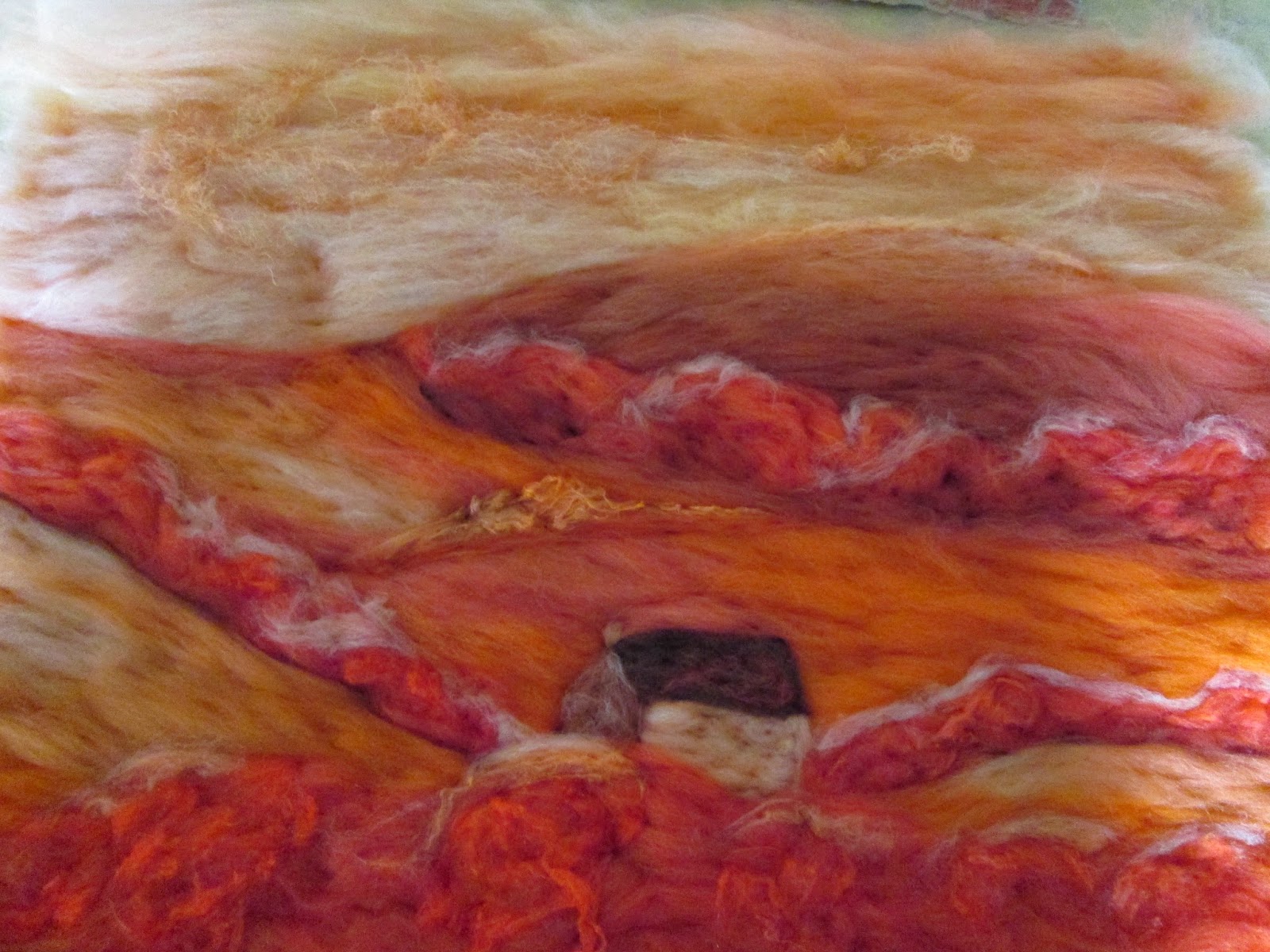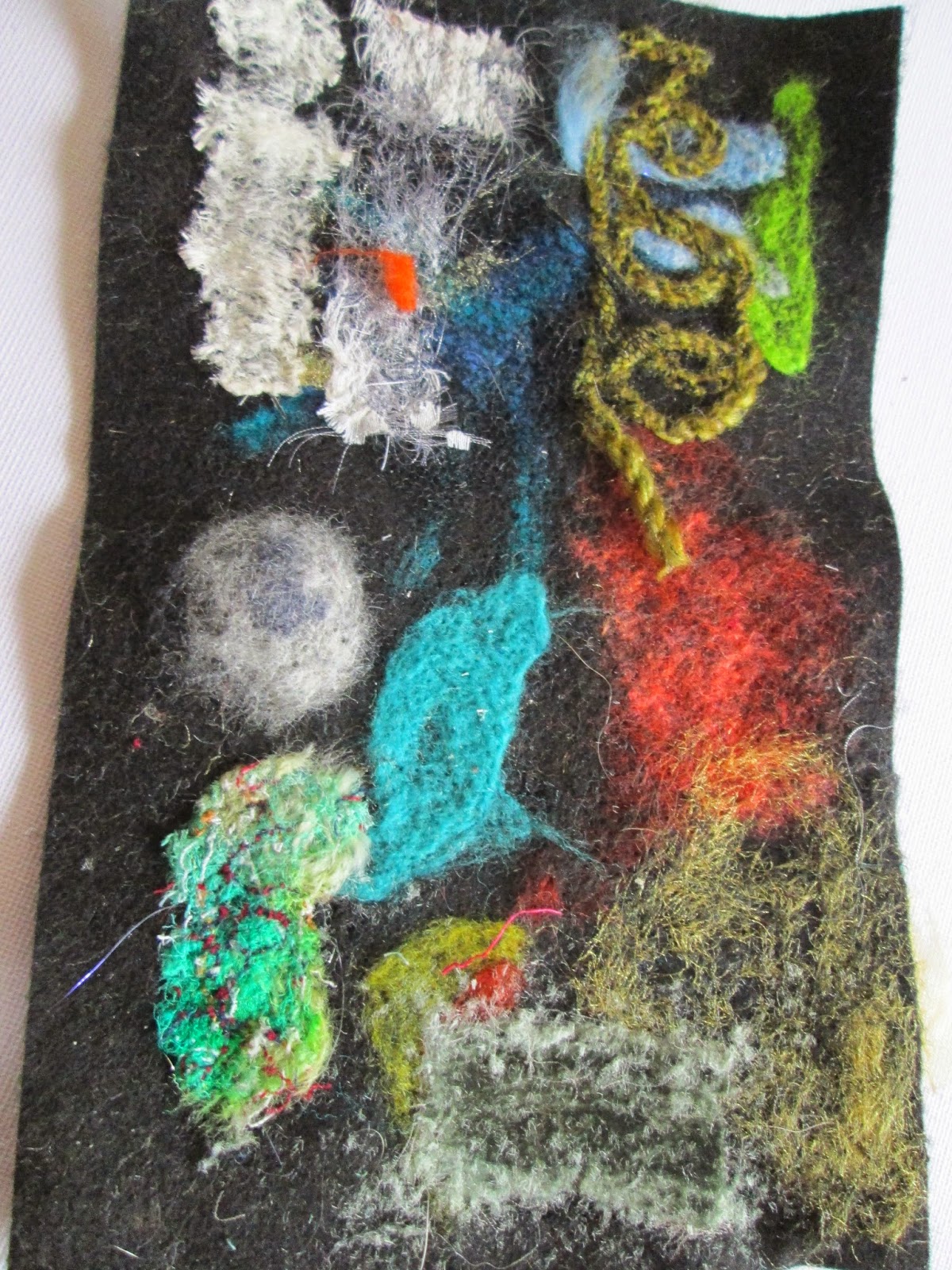Last time I showed you some of the journals I have been making and several people expressed an interest in the folded, concertina books with inserts. Here is a short tutorial. My finished book looks like this.

step one is to prepare your paper. Decide how wide you want your pages to be and how many of them you want. As you are going to be adding pamphlet pages later you don't need masses of folds. For instance if each page is to be 4 inches wide and you want four folds you will need a piece of paper 16 inches long.
You will probably need to join some pieces of paper together to achieve the length you want. For a first book I would recommend using normal A4 photocopy paper as I did. You can graduate to expensive papers later. To join the paper fold one end of each piece to make a small hinge on both pieces and glue them together .

The second stage is to form the concertina folds. The best way to get even folds is to fold the middle first and work your way out.
Now make your pamphlet pages. These can be the same size or smaller than the folded pages. I chose to make mine smaller so the folded pages made sections with the smaller pages inside.
Take 3 or 4 pieces of paper and fold each one in half with a good sharp crease. Bookbinders will tell you to use a bone folder to sharpen the crease but for our purposes the back of a spoon does the job. Place the folded sections inside each other and make three holes at equidistant spaces along the fold. Make sure the hole goes through all of your pages. You can use an awl for this or a large needle. You also need to make the holes in the fold of your concertina with the same spacings between them.
Thread a needle with strong thread, linen is good, or embroidery floss works. You can start at the inside of your pamphlet pages or on the outside of the fold. Take the needle through the centre hole of the fold and the pamphlet pages. Next sew back through the top hole and through the centre hole again. Then through the bottom hole and tie the end of your thread to the beginning of it at the centre hole.
This is much easier to do than it sounds written down! Just take one step at a time and do it as you read.
You can add pamphlet pages to every fold on both sides of the concertina if you wish.
Now the fun bit - the cover. You will need two pieces of card or mount board just a little bit bigger than your folded pages. Decorate it in any way you wish. Go to town. If you are a patchworker why not glue a mini quilt to it. You could make a mixed media cover, lino print on to it or a collage as I did. You will think of something personal to you. If the card is fairly floppy I recommend that you stiffen it up with pelmet vilene or gesso. The design only need to be on one side of each cover but try to neaten the edges. As I used fabric I turned the edge of the fabric over the edges and glued it to the other side.
At this stage you should also think of a fastening. As this book has no spine it needs to be fastened when not in use. I used string as I thought it fitted with the naive design of my cover but you could use ribbon or leather thong. This needs to be stitched to the front cover and be long enough to wrap around the whole book and be tied together.
To fix the covers to the pages you simply glue each cover to the first and last pages of your book.
Here is the inside of mine showing the different sized pages.

Have fun!
 Omega acid dyes seem expensive but a little goes a long way. For each of these tubs I uses less than a quarter of a teaspoon of dye granules.
Omega acid dyes seem expensive but a little goes a long way. For each of these tubs I uses less than a quarter of a teaspoon of dye granules.
 Omega acid dyes seem expensive but a little goes a long way. For each of these tubs I uses less than a quarter of a teaspoon of dye granules.
Omega acid dyes seem expensive but a little goes a long way. For each of these tubs I uses less than a quarter of a teaspoon of dye granules.

















































